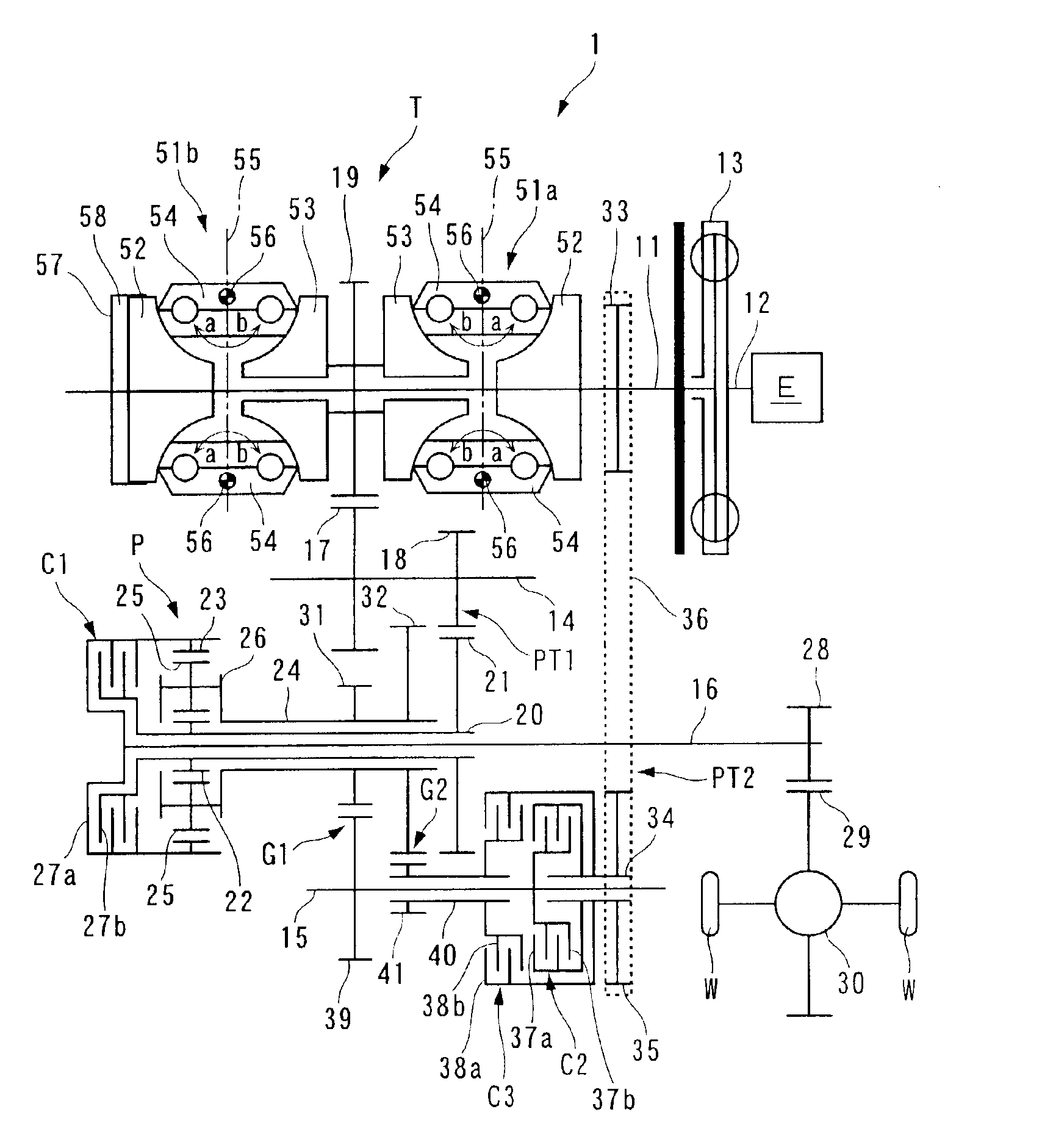Continuously variable transmission system for vehicles
a transmission system and continuously variable technology, applied in mechanical equipment, belts/chains/gearings, belts, etc., can solve the problems of increasing the number of components, increasing the number of system components, and manufacturing costs, and achieving a wide range of transmission ratios and smooth operation.
- Summary
- Abstract
- Description
- Claims
- Application Information
AI Technical Summary
Benefits of technology
Problems solved by technology
Method used
Image
Examples
Embodiment Construction
The invention will now be described in detail with reference to the drawings showing preferred embodiments thereof. Referring first to FIG. 1, there is schematically shown a continuously variable transmission system for an automotive vehicle, according to a first embodiment of the invention. The continuously variable transmission system 1 includes a toroidal continuously variable transmission T, a single pinion-type planetary gear mechanism P, a direct clutch C1 (hereinafter referred to as “the first clutch C1”, a torque split clutch C2 (hereinafter referred to as “the second clutch C2”, and an IVT clutch C3 (hereinafter referred to as “the third clutch C3”. Each of the first to third clutches C1 to C3 is formed e.g. by a wet-type multiple disc hydraulic clutch, whose engagement and disengagement is controlled by a hydraulic control circuit, not shown.
The continuously variable transmission T has an input shaft 11 connected to a crankshaft 12 (output shaft) of an internal combustion ...
PUM
 Login to View More
Login to View More Abstract
Description
Claims
Application Information
 Login to View More
Login to View More - R&D
- Intellectual Property
- Life Sciences
- Materials
- Tech Scout
- Unparalleled Data Quality
- Higher Quality Content
- 60% Fewer Hallucinations
Browse by: Latest US Patents, China's latest patents, Technical Efficacy Thesaurus, Application Domain, Technology Topic, Popular Technical Reports.
© 2025 PatSnap. All rights reserved.Legal|Privacy policy|Modern Slavery Act Transparency Statement|Sitemap|About US| Contact US: help@patsnap.com



